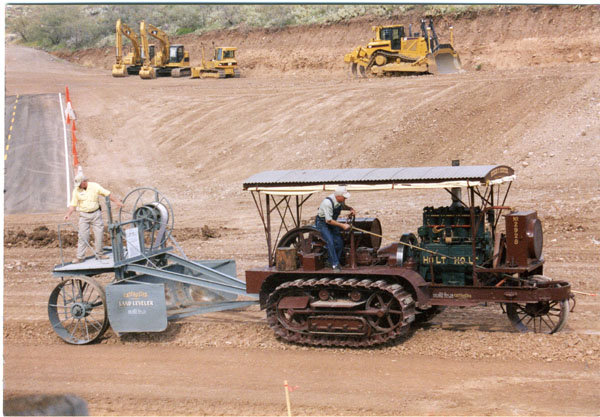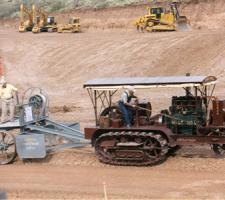
Mike Woof reflects on the development of the crawler track and its significance for the construction and extractive industries
The invention of the crawler track was a significant development for the off highway equipment industry, providing mobility and versatility that had not been available before. Most of the early steam powered shovels used in extraction (or construction) ran on rail, which limited their mobility and versatility.
Crawler tracks meant that for the first time, heavy machines were able to cross muddy ground without the risk of bogging down and this invention helped kick-start a revolution in the extraction and construction industries.
In November 1904, a heavy steam engine built by Ben
At first Holt had fitted extra wide steel wheels to the traction engines but these were not successful as they made the already heavy machines very cumbersome to manoeuvre. The steel wheels also offered poor traction and only a minor improvement in terms of flotation.
After some head scratching, Holt's innovation was to scratch build tracks for his steam powered Holt Junior Road Engine Number 77 that featured wooden pads. There is debate about the dimensions of these tracks, which were designed for use on soft earth, but some believe they measured 2.7m long by 1.01m wide.
There is no small irony in the fact that Holt's invention came 11 months after the Wright brothers first managed to persuade their Flyer into the air. Men built machines able to fly before making ones that could crawl.
Holt was not the first to try to develop crawler tracks, with earlier attempts having been made in the previous century. However, Holt's tracks worked and after some development he sold his crawler machine in 1906.
Across the other side of the Atlantic though, Holt had a competitor. In the UK, R Hornsby & Sons was also working on a crawler system and had actually patented its chain track in 1904, although its first machine was not operating until 1905.
Both Holt and Hornsby continued to develop their track designs, although the former achieved considerably more commercial success than the latter. Hornsby eventually sold the rights to its patent to Holt in 1914 for $8,000 (€5480), a considerable sum by the standards of the day.
In the meantime, Holt had realised that the steam engine had its limitations and began developing his own range of petrol powered internal combustion engines instead, which were lighter with far better power to weight ratios as well as being more simple to operate and quicker to start. These were put into production in 1908, when the firm established its engine division.
Although the first crawler tractors were used in agriculture, the construction and extraction industries quickly realised the value of these machines for towing scraper boxes used in earthmoving for example. Dozer blade attachments were then developed although the crudity of hydraulic systems of the time meant that cable operated blades offered by firms such as LeTourneau became standard options. The bulldozer had arrived.
If Holt had managed to see off its UK competitor, it had a tougher rival closer to home in the shape of another Californian firm called Best. Although Holt bought out Best in 1908, the son of the founder, Clarence Best, left and set up the
The development of Holt's crawler track is arguably the single most important development for the entire off-highway equipment industry. This invention spawned the bulldozer and led to the establishment of the global giant Caterpillar, as well as leading to the development of the crawler tractor's cousin, the military tank














